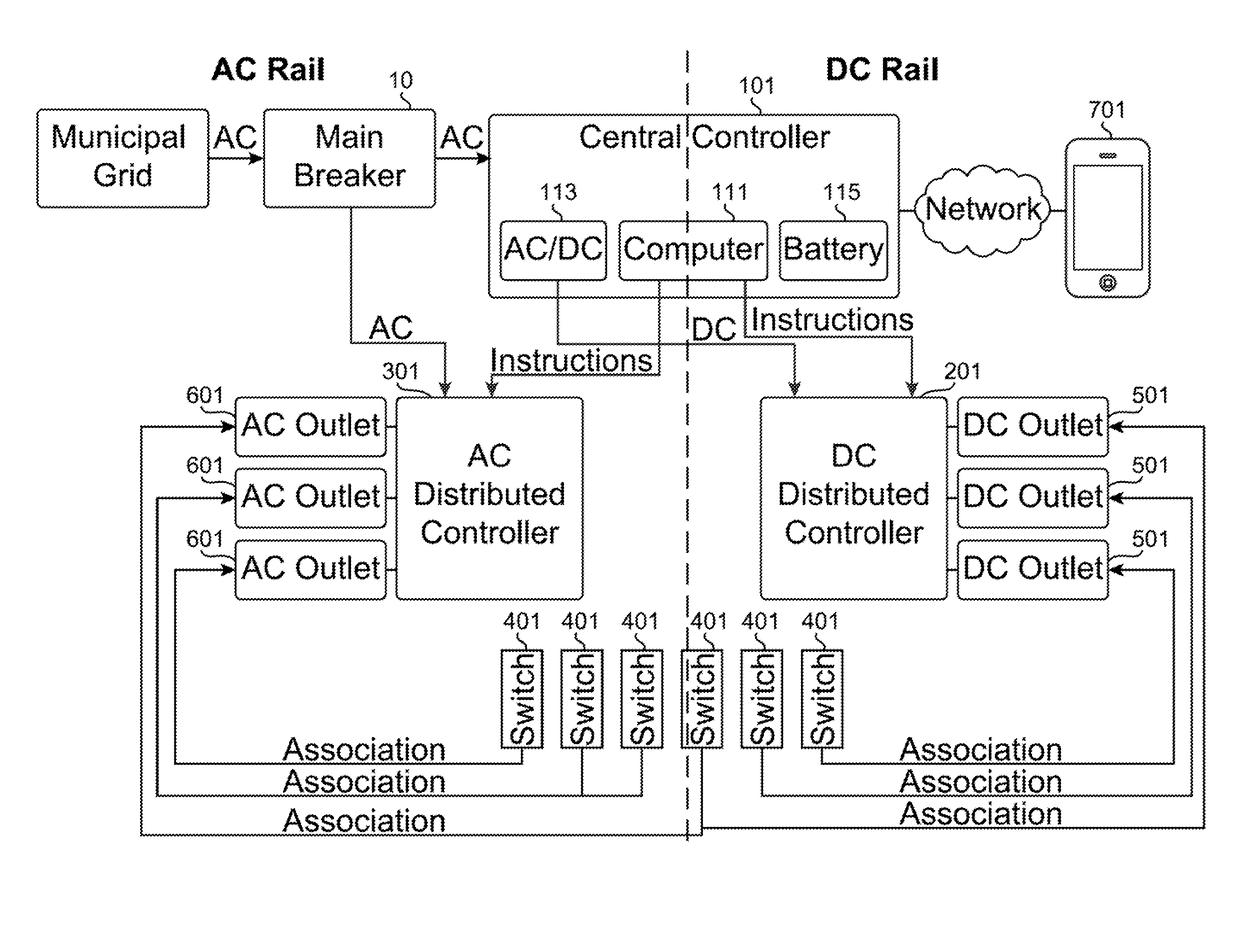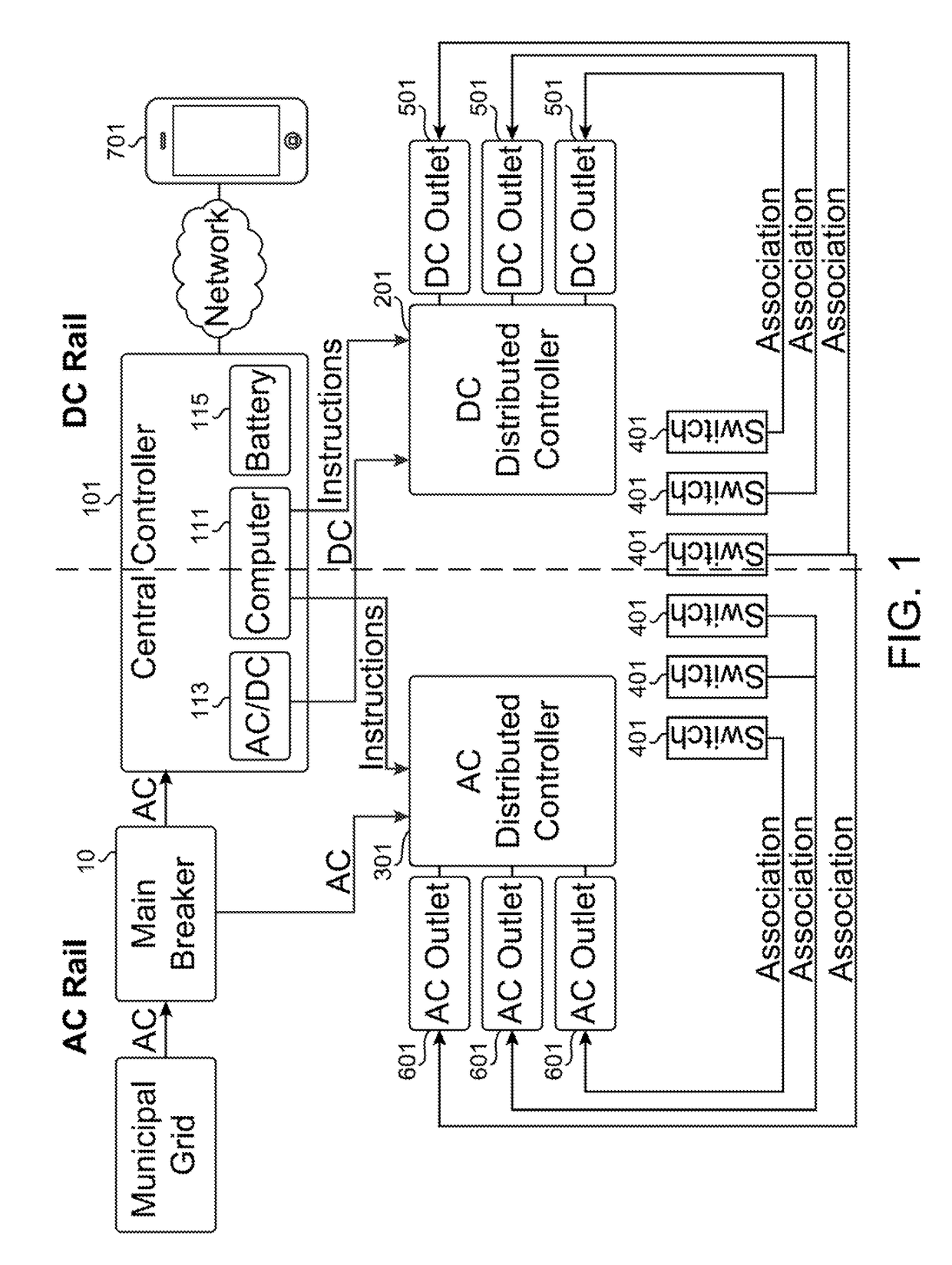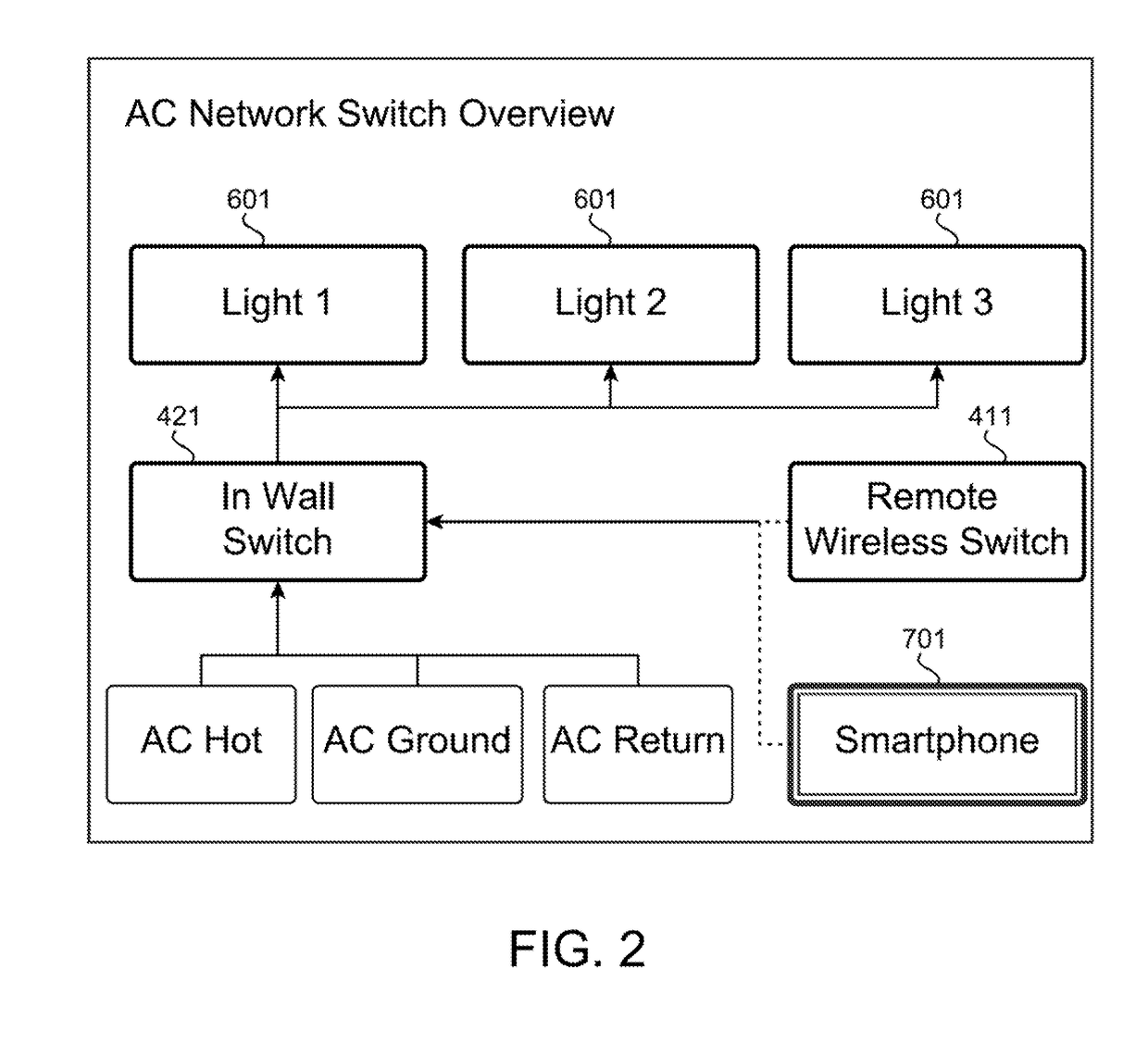Reconfigurable power control system
a power control system and reconfigurable technology, applied in the integration of power network operation systems, transmission systems, circuit arrangements, etc., can solve the problems of reducing the overall reliability of led bulbs, driving up costs, and reducing the overall efficiency of led lighting systems
- Summary
- Abstract
- Description
- Claims
- Application Information
AI Technical Summary
Benefits of technology
Problems solved by technology
Method used
Image
Examples
Embodiment Construction
)
[0036]A house or other structure used by humans will traditionally have a power distribution system arranged within it. In common parlance, this is usually referred to as the structures “wiring” as wires will extend from a central main breaker to distribute power which is obtained by the main breaker from an external power grid to a variety of outlets through the structure. In this disclosure, the distribution systems will be referred to as “rails”. This is a term commonly used in computer circuit design to refer to the primary source of power on a circuit board but is not commonly used in housing. This term is used herein as it provides for a clearer term more connected with the idea that the rail is the infrastructure portion of the wiring in the structure.
[0037]Similarly, this disclosure will refer to power “outlets”. In general parlance, a power outlet is generally a point of connection which allows for devices which can be completely external to the power rail to be connected ...
PUM
 Login to View More
Login to View More Abstract
Description
Claims
Application Information
 Login to View More
Login to View More - R&D
- Intellectual Property
- Life Sciences
- Materials
- Tech Scout
- Unparalleled Data Quality
- Higher Quality Content
- 60% Fewer Hallucinations
Browse by: Latest US Patents, China's latest patents, Technical Efficacy Thesaurus, Application Domain, Technology Topic, Popular Technical Reports.
© 2025 PatSnap. All rights reserved.Legal|Privacy policy|Modern Slavery Act Transparency Statement|Sitemap|About US| Contact US: help@patsnap.com



